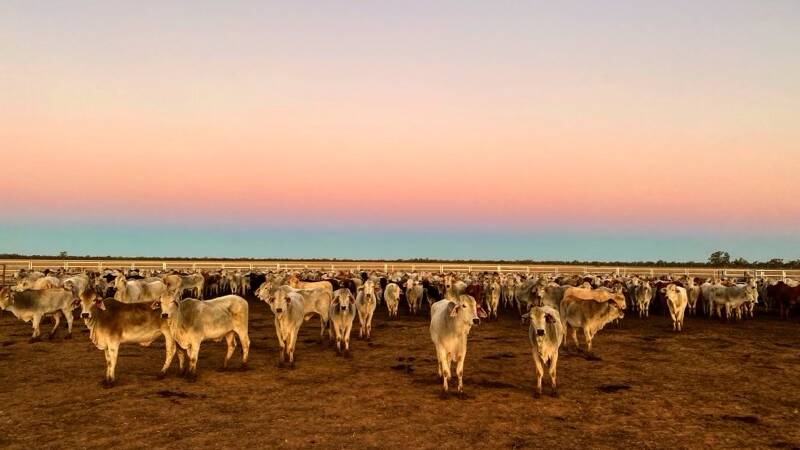
What began as a breathtaking gamble on the cattle market has resulted in an ongoing breeding venture for Moonie's Mitchell Cameron.
In a program described as bigger than Tom Brinkworth's epic 2013 purchase of 18,000 cattle from AACo and their subsequent drive from Longreach to Hay in NSW, Mr Cameron traded many thousands of head throughout the past two years, using agistment for every transaction.
Utilising up to 57 properties over the period, the most he had on hand at any one time were 38,000 light steers and heifers, but he purchased many more than that over the course of the venture.
Richard Cameron set up the Mirradong Meats cattle trading business at Moonie nearly 10 years ago and his son said they were used to moving cattle around.
After a stint in the east Kimberley at Carlton Hill, not far from Legune Station, which the family owned at one stage in partnership with two others, Mitchell Cameron studied at university and worked as an accountant for a time.
He said the agistment plan wasn't motivated by drought but by the sheer fact that the numbers stacked up.
"I did the sums on prices at the time - there appeared to be margins there, for different classes, so I started putting some away around mid-March 2020," he said.
It was around the time that the COVID-19 pandemic began gripping the world and Mr Cameron said there was a lot of nervousness about meat supply in the market.
"I was buying 200-250kg steers and heifers in the 260 to 300 cents a kilo range, starting off with more flatbacks, but in the end I took everything," he said.
The bulk of the cattle came from Longreach north to the Gulf, but he didn't stray to the Northern Territory because of the distance involved.
It was "no drama" to find country to put them on, with much of NSW and southern Queensland understocked coming out of drought and property owners in need of cash flow.
The average mob size was 500-600 head, placed on country from central NSW, around Warren and Nyngan and west to Tilpa, through to Thargomindah and Cunnamulla in Queensland and east to Thallon and Westmar areas, and everywhere in between.
"As a general rule, I didn't take anything east of the Newell Highway," Mr Cameron said. "The smaller the mob, the harder it was to manage it all."
He paid tribute to his wife Bella, at home with their three children, while he and one staff member were continually on the road checking mobs and undertaking the usual husbandry practices.
Stock losses amounted to less than 1 per cent.
Some of the transactions were financed through Nutrien but the majority of it was vendor finance, at 10 to 15 cents above the rate, with Mr Cameron given up to six months to pay.
"The plan was that the lead cattle would be sold when vendor payments needed to be made," he said.
"I was able to manage the cash flow but in September-November there was quite a bit due, 6300 head from one vendor - that was close to $7m in one hit.
"I had a lot coming and going at one time."
Mr Cameron said the risk wasn't for everyone, knowing that once he was in deep, he had to keep going.
"I never thought I was going to go broke, so long as I managed the cash flow," he said.
"It's a specific mentality. A lot of times something like this would lose money, come unstuck.
"Everything went our way, the season held on."
While he likes AuctionsPlus as a platform to sell on, Mr Cameron said the logistics in agistment settings made that harder to use, and the majority of the cattle were sold direct to feedlots.
Prices exceeded expectations, around three times what he'd planned for, but weight gains didn't in all cases, and Mr Cameron said there were some classes of cattle he now wouldn't buy, based on that experience.
He joined many of the heifers purchased to Angus bulls and now has around 10,000 breeders still on agistment, hoping to brand 8500 calves.
"So I guess it hasn't really ended," Mr Cameron said.
IN OTHER NEWS:
Want daily news highlights delivered to your inbox? Sign up to the Queensland Country Life newsletter below.


